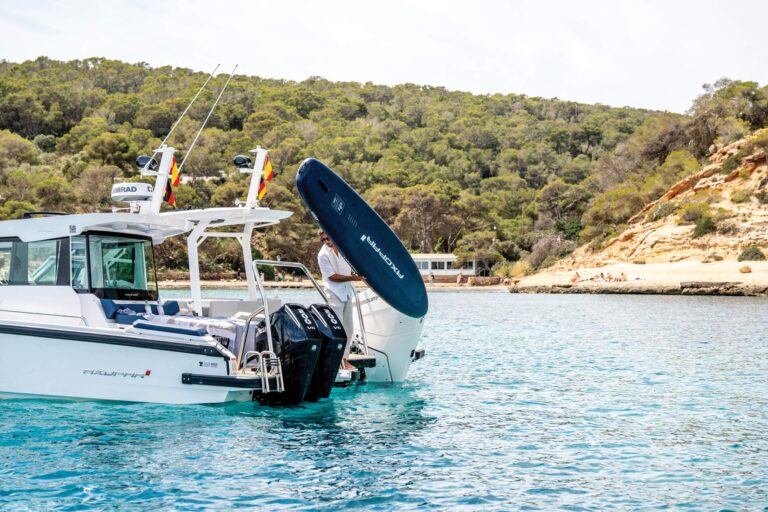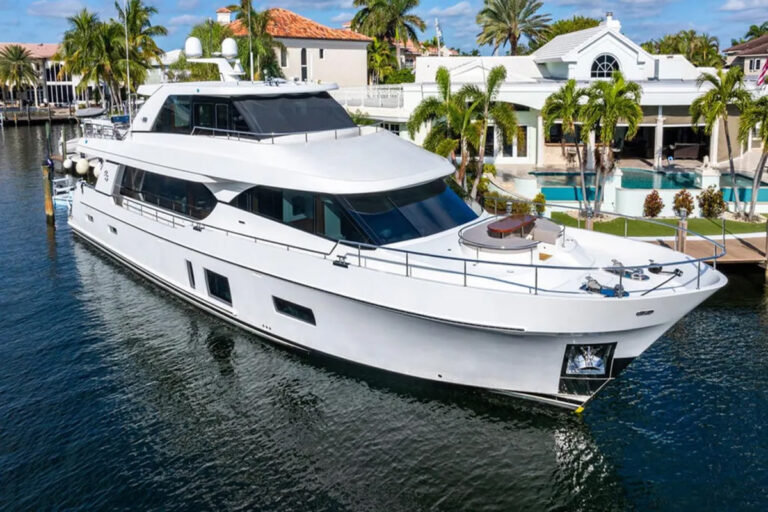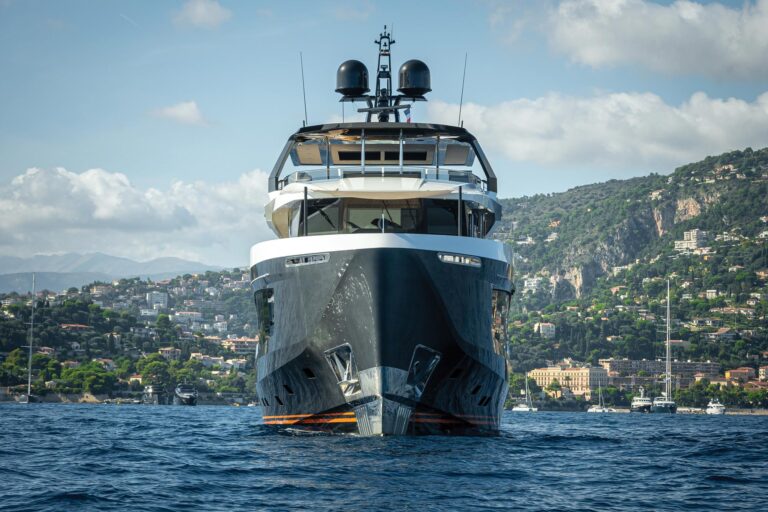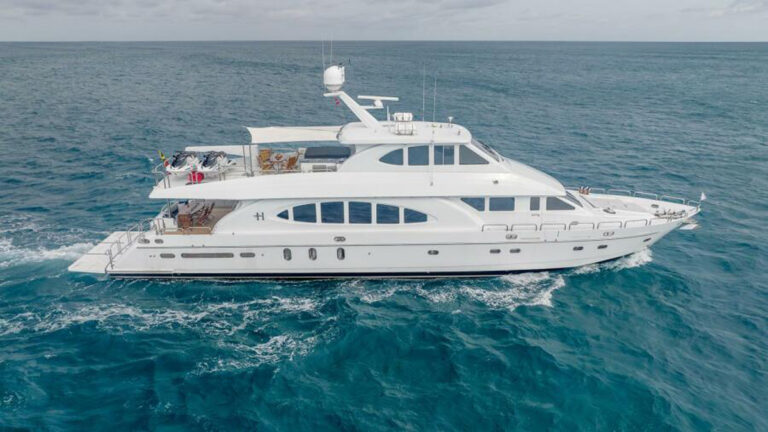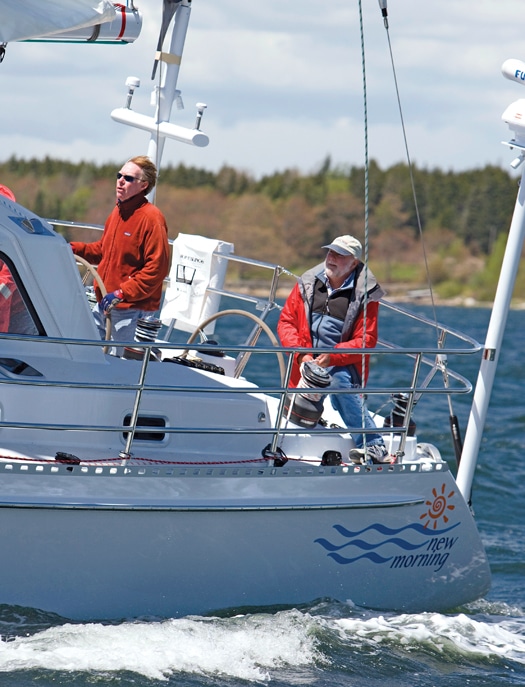
My Yacht Designs and What They Taught Me
By the end of summer I was home in the United States. I was 21 years old, way beyond broke with college loans that would take the next ten years of my life to pay off, and desperately looking for a job. The dream of becoming a yacht designer had to be deferred as starvation loomed. I took a drafting job at a textile winding machinery company in Rhode Island and lived in an apartment in Providence. I loved drawing for a living. I continued to draw boats in my spare time and as my savings increased so did my yearning to get moving toward what I believed was my destiny.
A year and a half into that job I learned that the placement departments at Brown and MIT had reciprocal agreements. As a Brown alum, I had access to MIT, and they taught Naval Architecture, so they must know companies that needed nautical draftsmen. On a whim one day I drove up there just for a look-see. I walked in and introduced myself to a tall, beautiful young woman a little too tall and a lot too beautiful to be a romantic prospect for the likes of me. But I’ll always remember her name for the simple reason that it was unforgettable— Amy Blue.
Amy Blue took me on as a project. After an hour on the phone she had gotten me two jobs which, combined, would enable me to move to Boston. When she asked me, “Do you think you can get a security clearance?” I realized that one of my employers would be none other than our esteemed CIA, despite the bogus moniker that appeared on my paychecks. The other was a famous professor of Naval Architecture who needed an extra body coding data for one of his research papers. Encouraged, I took a shot. “I know you’ve got a towing tank here. Any chance of a job with them?” She got me that one too.
A few months later I was hunched over my desk in Dr. Kerwin’s office when a fellow named Jerry Cashman came in to see my boss as he’d done numerous times before. Jerry worked for a famous consulting company in downtown Boston that designed nuclear power plants for naval ships’ propulsion. He’d obviously spoken with Dr. Kerwin before he sidled over to my desk and said, “Mr. Paine?” “You mean me?” I answered. “How’d you like a REAL job?” he said.
J.E. Bowker Associates was indeed a real job. They paid me $7,200 a year to start—more money in 1968 than most men earned at the end of their working lives. I wore a jacket and tie to work every day. And the work was fascinating. Mostly I wrote computer programs in FORTRAN and designed pressure vessels using a computer program called “Seal-Shell 2.” But in helping to design ships I was getting closer to designing yachts and that was all I cared about. They had a huge drafting pool with 20 or 30 men drawing in ink on linen to the exacting standards that the U.S. Navy insisted upon. Every line weight, every line type had to be perfect, and there was no erasing when you drew on linen.
I was the low man on the totem pole. All the work was “classified” since in those days there was a Commie behind every tree. Those were the days when computers lived in air-conditioned rooms on floors that floated on springs and if you needed a powerful one there were only a few in the entire country. We’d run stress analyses and thermal transients and I’d be the poor schlep who’d fly out to Barberton, Ohio, with a briefcase full of punch cards and then back the next day with a stack of green and white computer fanfold in the seat beside me. Once back in the office I would have to swear an oath that I had not taken my eyes off the stack even to take a pee at the back of the plane lest some Russkie might have photographed it with a wristwatch camera.
The Vietnam War was heating up and the morality of colonial powers imposing their will upon poor countries halfway around the world was being violently debated in the streets of American cities. No matter how I parsed it I couldn’t escape the fact that the things I was designing weren’t yachts, they were war machines. I pasted a peace decal on my rear bumper and came to the conclusion I had no choice but to quit the best job I’d ever had.
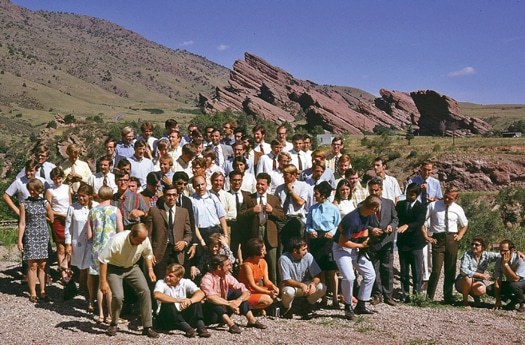
| | |
In the spring of 1969, at the age of 25, I made my decision. The idea of joining the Peace Corps had been floating around in the back of my conscience for a while. I’d been the beneficiary of immense good fortune. I’d been exempted from military service on a technicality (I’d had asthma as a child). I’d been given, almost free of charge, an education that no amount of mere money could buy. I’d found work that was both fascinating and lucrative. John Kennedy’s words gnawed at me; “Ask not what your country can do for you, ask what you can do for your country.” It was time to do something for someone other than myself for a change.
When I got my letter of acceptance they told me I’d be going to a place called Iran. I literally had no idea where on earth it was and had to look it up in an atlas. The Peace Corps had a place on their application where you could request three potential countries of service. I had put down Malaysia, Jamaica and Fiji because I’d be close to the ocean. You could reject an offer and when another placement came up they’d send it to you. But in a way I figured that was against the spirit of volunteerism. If they needed me in a place called Iran, that’s where I’d go.
I had joined the Peace Corps with the hope of digging wells in some bucolic tropical Paradise. Instead they sent me to Tehran, the largest city I would ever inhabit in my life, in the middle of a desert. The Peace Corps Volunteers in Iran had a name for Tehran. They called it the a—–e of the universe—I’m sure you can substitute the appropriate body part. But they needed computer programmers at a government ministry called the Plan Organization. I’d have to quickly learn COBOL, another computer language. Would I do it? I had come this far—I figured there was no turning back.
I worked in Tehran for two years. Two years in Iran went by like 20 years at home! But I got to travel all over the Middle East, three times to Afghanistan and Turkey and to every corner of Iran. Tehran was a tough place to live, but Iran was fascinating and romantic and beautiful, and the Iranians were as good and kind as people are anywhere. And, being in the Peace Corps was an experience that I wouldn’t trade for anything. I’d do it again in a minute if I had the health and strength I had when I was young.
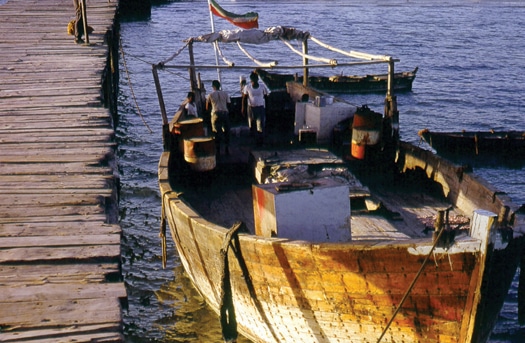
| | |
As I neared the end of my tour of duty I began to think about my future. I’d continued to sketch boats, even went down to the bazaar and bought tools and wood and made a model of a little yacht I hoped to design and build when I returned. I’d seen the world, survived a difficult posting and a hundred intestinal diseases in Tehran, was becoming a good engineer, knew a lot about computers, and realized if I didn’t do it now at age 27—right away when I returned to America—I’d end up just like Chick Street… working for nothing but money for the rest of my life.
And that’s exactly what I did. I returned to Boston in October of 1971 via a wonderful overland backpacking tour of Turkey, Greece, and much of Europe. I slept for three whole days on my brother’s floor in Marblehead. I ate rare hamburger and bought things without bargaining and had solid stools. Then I got out the Boston yellow pages and looked up Naval Architects. There were four. Two that did only yachts…Dick Carter in Nahant and John Alden downtown. Two others who specialized in fish-boats and military craft. Nahant was closest to Marblehead and Dick Carter was famous. I knew I’d never get a job with him, given who he was, but I had to start somewhere, and I had months, years if necessary, because I simply wasn’t going to give up on my dream, ever.
I remember it was a Friday. I drove my brother’s Volkswagen van to Dick’s office, parking it where I hoped he wouldn’t see it. Art was into his countercultural phase at that point and his van was embellished with an all-over psychedelic paint job in day glow colors, with a smokestack sticking out the top. Not exactly the sort of vehicle one of the world’s most famous racing yacht designers might expect a prospective employee to drive.
I walked in and met Dick Carter. He was not in a good mood. Seems his number one guy, Jim Hartvig Anderson, the only person who knew how to run the time-shared computer, had just given his notice. I showed Dick my drawing portfolio. He asked a few questions. Money was important, of course—I was once again broke after working without pay for two years. I formed an idea of how much I would ask him for if it ever got that far. He didn’t ask. He said, “I’ll offer you such and such a salary.” (It was a lot more than I was going to ask for). Then he says, “Can you start on Monday?”
To order Chuck Paine’s full memoir, My Yacht Designs and the Lessons They Taught Me, go to his website at www.chuckpaine.com_._





